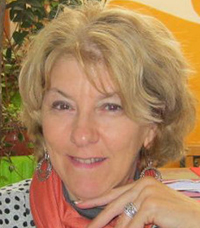Nice is about 27 km (17 miles) from the “perfume capital of the world”, Grasse, with its large parfumeries, “Fragonard” and “Molinard,” as its major industries and tourist attractions. There are several additional options, though, as Nice has “Molinard,” Eze village has “Fragonard,” and Cagnes-sur-Mer has its “Atelier des Parfums,” all where you can do a guided visit and purchase products.
I recently visited one of the perfume shops and learned that in the 16th century, roses were added into the leather making process, as a way to hide the animal odor in gloves: at that time, animal fat was used to absorb the flowers’ fragrance, then washed with alcohol and filtered.Today, petals are distilled in a variety of methods, depending on the concentration of oil desired:
~ 1,000 kg of flowers distilled with water vapor = 1 kg of essential oil
~ 600 kg of flowers distilled with solvents = 1 kg of “absolu” (a higher concentrate)
~ 5 tons of flowers = 1 liter essential oil
Surprisingly, most flowers are imported; however, the three grown around Grasse are rose, jasmine, and violet. The most common regional flowers used in making perfume are mimosa, lavender, rose (petals), jasmine, orange blossom, violets, and broom. No wonder pure perfume is so expensive, as 10 ml of natural rose liquid costs 200 Euros!
Le “nez” (nose) is, logically, the title given to the creator of original perfume scents, and who, to begin with, must be able to recognize the smell of 400 primary scents, with an increase in repertoire possible to around 1,500-2,000 different odors – thus, prohibited from smoking and drinking alcohol which would negatively affect their sense of smell. Reportedly, about 50% of “les nez” are women, with the main training center being situated in the town of Versailles.
France Today reported that “perfume was raised to an art form under Louis XIV, the Sun King, who doused himself liberally with a different scent for each body part en lieu of bathing, which was considered downright dangerous at the time. It is explained how, under King Louis XV, the Château came to be called “the perfumed court,” due to the King’s demand for a new perfume every day; Marie Antoinette’s passion for florals ignited a rage for rose, lily, violet and especially jasmine, a gift of perfumed gloves so delighted the improvident queen that she launched yet another craze.”
The perfume factory’s laboratory is more like an office library, with rows and rows of shelves called an “organ” ; full of bottles of scents, each one called a “note” ; and the combination of scents is a “chord,” with many chords considered a “composition.” So, the “Nez” is, in fact, a musical composer playing with around 80-150 different scents for creating one perfume!
Perfume fragrance changes with time: the first impression – that first burst of smell – of a perfume is called, “la note de tete”; after a couple of hours, you smell “la note de coeur”; and the final phase, or lingering scent, is called “la note de fond.” Who hasn’t been around someone who put on way too much perfume that lingered much too long with a very strong “note de fond”!)
Following are the concentrations of the various grades of perfume, so the next time you are shopping, you’ll know the differences:
Perfume = > 20%
Eaux de parfum = 12-15%
Eaux de toilette = 8-12%
Eaux de cologne = 7%
Of course, the most famous French perfume is “Chanel No. 5.” Coco Chanel launched her first perfume, Chanel No. 5, which was the first fragrance to feature a designer’s name. Perfume “is the unseen, unforgettable, ultimate accessory of fashion. . . . that heralds your arrival and prolongs your departure,” Chanel once explained.
Unfortunately, I have a strong sensitivity to perfumes, and therefore, rarely wear them. According to an English physician of the 19th century, “a perfume should correspond to the personality, physical, emotional, and mental characteristics of its wearer, and should be as specific to each woman as the sound of her voice.” Hmmm, since I don’t wear perfume, I wonder what that indicates about me! So, what scent are YOU singing?
Quote source: Complete Illustrated Guide to Aromatherapy
by Kim in France blogger Kim Defforge.
Kim is a lifelong Francophile, and former French teacher. Having moved from the U.S. to the French Riviera, she enjoys writing about France and French culture on her blog, 24/7 in France. From the simple beauty of a Mediterranean sunset to her passion for all things French, Kim shows us that dreams can come true!
Kim Defforge is the author of "Solitary Desire: One Woman's Journey to France" and "Sun, Sea & Savoir-Faire: Travel Focus on the French Riviera".

